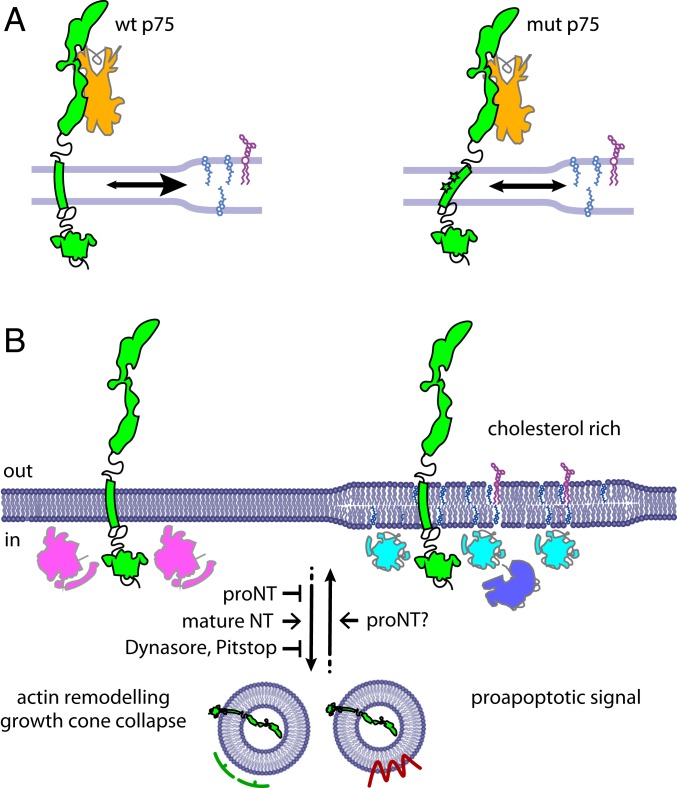Fig. 8.
Proposed model for p75NTR signaling on the plasma membrane. (A) Model of the membrane partitioning undergone by wt p75NTR (Left, green) or mut p75NTR (Right, green) upon NGF (orange) binding. Cholesterol-rich, signaling-competent regions are represented with increased membrane thickness and containing cholesterol and gangliosides. Partitioning is highlighted by the arrows in opposite directions. (B) Model of p75NTR signaling at the membrane and downstream internalization. Signaling can occur from cholesterol-poor or cholesterol-rich membrane regions, resulting in receptor internalization within clathrin-positive (green) or caveolin-positive (red) endosomes. In our model, interactors of surface-retained p75NTR (magenta), involved in actin remodeling and growth cone collapse, are more abundant in nonraft regions as this pathway is not impaired by the mutations introduced in mut p75NTR. Conversely, apoptotic signaling effectors (light and dark blue) are enriched in raft platforms being efficiently activated only by NGF-bound wt p75NTR. Different from mature NTs, proNTs at the growth cones cause surface accumulation of p75NTR, which could arise from internalization inhibition (as for Dynasore and Pitstop2 treatments or expression of the dominant negative K44A dynamin) or by increased receptor recycling at the membrane.

